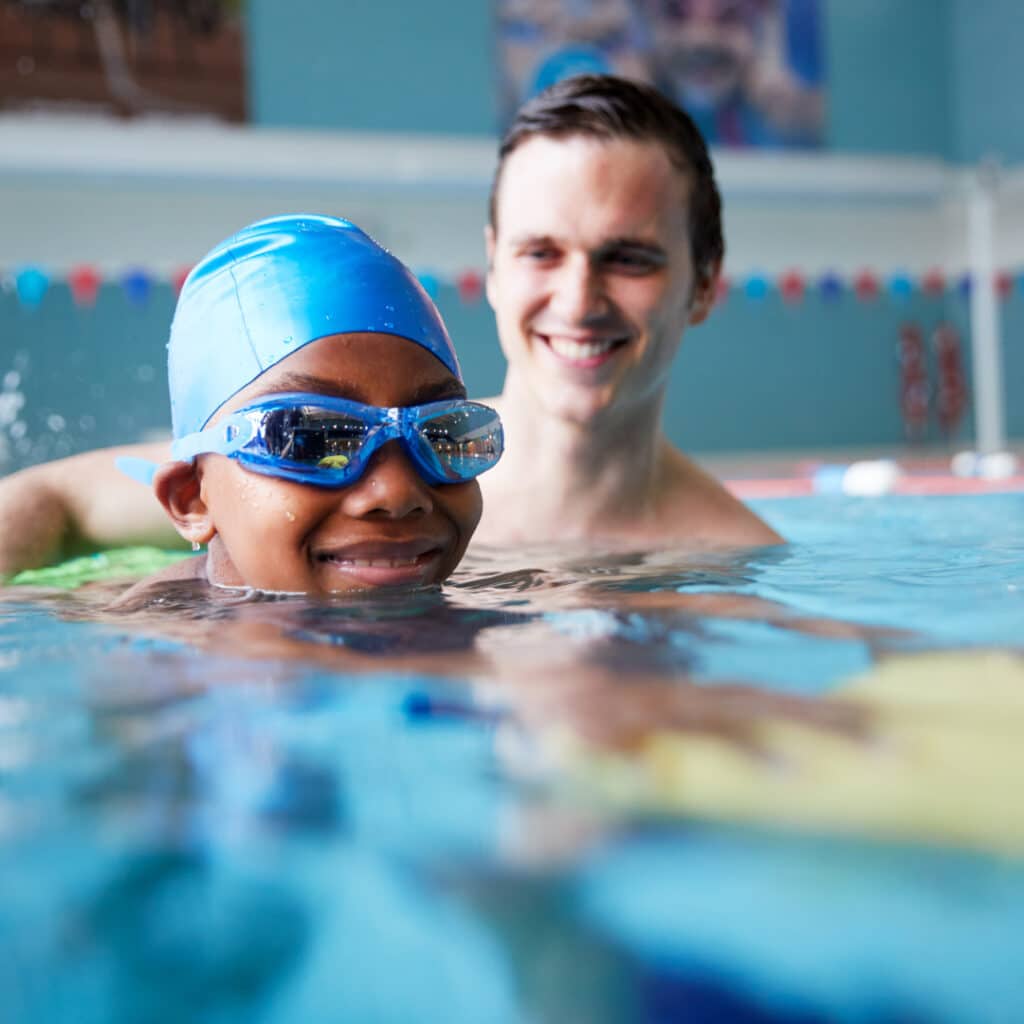
Swimming is a life-saving skill and a source of endless fun—but how long does it take for a child to truly learn how to swim? The short answer: it depends. On average, most children require 20–50 hours of structured swim lessons to become proficient in basic swimming skills, but individual progress varies based on several key factors.
At Blue Dolphin Swim School, we believe every swimmer’s journey is unique. Whether your child is just dipping their toes or building endurance across the pool, we’re here to support their growth in a safe, positive, and encouraging environment.
What Impacts How Quickly a Child Learns to Swim?
1. Age & Development
Younger children, especially toddlers, may take longer to learn because they are still developing physical coordination. However, they’re also more adaptable and can gradually build water confidence through early exposure. School-aged children often pick up the mechanics faster but may need more time overcoming fear of water or the discomfort of heads under water.
2. Consistency of Lessons
The frequency of lessons plays a big role in swim success. Children who attend lessons consistently—whether once or twice a week—tend to progress faster than those with sporadic or seasonal sessions. Like any physical skill, swimming requires repetition and muscle memory.
3. Prior Water Experience
A child who’s already familiar with a swimming pool, home pools, or time spent near inland waters will likely feel more at ease during formal lessons. Exposure to water—even through supervised play—can make structured swim instruction more effective.
4. Learning Style & Confidence
Some kids are natural water lovers, while others may struggle with the discomfort of water seeping into their ears or eyes. Building confidence—especially in chest-deep water—is often the first major milestone. An encouraging, fun environment helps them stay engaged and enjoy the process.
5. Quality of Instruction
Certified instructors who understand the components of swimming—from breathing and floating to coordinated swimming movements—make a huge difference. At Blue Dolphin Swim School, our experienced team tailors each lesson to match your child’s comfort level and ability.
A General Timeline by Age Group
While there’s no universal timeline, here’s a helpful breakdown to set expectations:
-
Infants (<1 year): Focus on water acclimation, floating with support, and basic safety habits. Expect a long-term investment in comfort, not independent swimming.
-
Toddlers (1–3 years): Typically need 20–30 lessons to develop essential water comfort and early swimming skills, including kicking, floating, and submersion.
-
Preschoolers (3–5 years): May take 6–12 months of consistent lessons to swim short distances, float without assistance, and demonstrate early swimming strokes.
-
School-aged children (5+ years): Often learn to swim independently within a few months of regular instruction, particularly if they already have some water exposure.
Remember, learning to swim isn’t just about speed—it’s about mastering essential skills like floating, breath control, and safety in both shallow water and deeper environments.
Swim Progress: Tips for Parents
-
Celebrate Small Wins: Every new skill—whether it’s a face in the water or a full lap across the pool—is a step forward.
-
Reinforce Water Safety Tips at Home: Practice deep breath techniques, floating, and water entry/exit during family swim time.
-
Stay Patient: Some children may take longer to gain comfort in chlorinated water or during submersion.
-
Avoid Comparisons: Each child’s swim journey is personal. Focus on steady progress, not perfection.
-
Model Safe Behavior: Always wear a PFD (Personal Flotation Device) during boating, teach the importance of water smarts, and demonstrate how to be a responsible water watcher.
Frequently Asked Questions
1. Can a child learn to swim in just a few lessons?
While some children show quick progress, most need consistent lessons over time—typically 20–50 hours—to develop strong swimming fundamentals and safety skills.
2. How do I know if my child is ready for swim lessons?
Look for signs like interest in water, ability to follow instructions, and emotional readiness. Even a brand-new swimming student can benefit from exposure through parent-and-child classes.
3. Should my child practice between lessons?
Absolutely! Supervised swim time in a backyard pool or at a swimming pool reinforces the techniques taught in class and builds confidence.
4. What if my child is afraid of the water?
It’s common for beginner swimmers to experience fear in water. Our instructors use a gentle, step-by-step guide to help children gain comfort and trust at their own pace.
5. Do swim lessons include water safety training?
Yes. A high-quality swim school should teach not just swimming strokes but also essential safety skills like floating, treading water, recognizing water hazards, and what to do if they fall in unexpectedly.
6. What role do parents play in the process?
Parents are key! Encouragement at home, reinforcement of safety tips, and modeling positive attitudes around water all help children succeed in their swimming journey.
Enroll Today at Blue Dolphin Swim School
There’s no exact timeline for learning to swim—but with the right environment, consistent lessons, and encouraging instruction, your child can build strong, confident swimming skills for life.
At Blue Dolphin Swim School, our expert instructors guide swimmers of all ages through their individual journey—from blowing bubbles to mastering full strokes. With flexible scheduling, warm-water pools, and a focus on both fun and safety, we’re here to help every child thrive in the water.
Ready to get started? Visit our site to view class options, instructor info, and enrollment details. Let’s make swimming a lifelong skill—one lesson at a time.

